Department of Medical Physics Celebrates 40 Years of Technology Development, Clinical Care and Education
In the not-too-distant past, clinical medical imaging could rely only on simple X-ray images on film. Back then, unfortunately, patients often had to undergo “exploratory surgery” to investigate illnesses beyond what physicians could learn from common clinical evaluations and X-rays.
And while radiation therapy has been a tool to treat cancer for nearly 100 years, the initial methods were in their infancy. Advances beyond the early days of medical imaging and gamma-ray treatments have relied heavily on the involvement of physicists in medicine.
Advancements in understanding how to safely use X-ray and gamma-ray radiation — and how to protect patients from excess exposure — have led to X-ray computed tomography (CT) imaging and positron emission tomography (PET) imaging, as well as advancements in radiation therapy and treatment planning. Physicists also have been integral to the development and advancement of magnetic resonance imaging (MRI) and the use of high-frequency sound waves (ultrasound) in medical imaging.
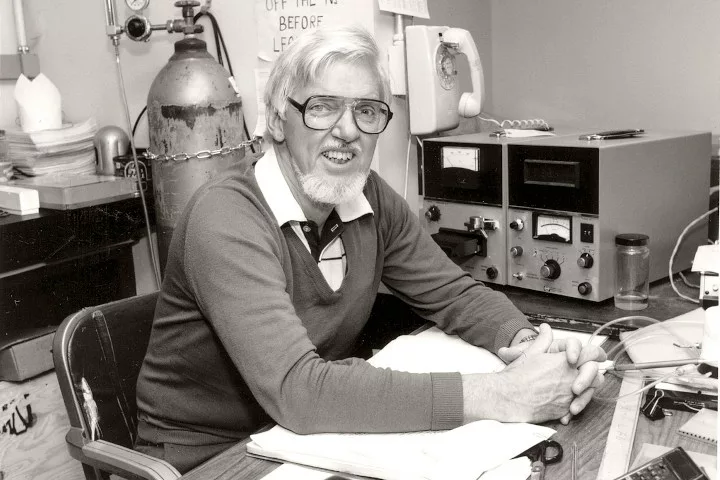
While medical imaging and radiation therapy for cancer treatment have become mainstream in nearly every U.S. health care facility, we pause to reflect upon researchers in the Department of Medical Physics at the University of Wisconsin School of Medicine and Public Health who contributed to and/or invented many aspects of today’s technology, including solutions for accurate diagnosis and optimized treatment of human disease. These teams of investigators are among the masterminds who made these celebrated technologies a reality throughout the department’s 40-year history.
Medical physics is the application of physics concepts and methods to diagnose and treat human diseases. The field combines and applies physics and math to medicine, and it is the foundation of radiology, radiation oncology and nuclear medicine. Faculty and staff in the Department of Medical Physics play an increasingly vital role in the discovery of diagnostic techniques and promising treatment modalities.
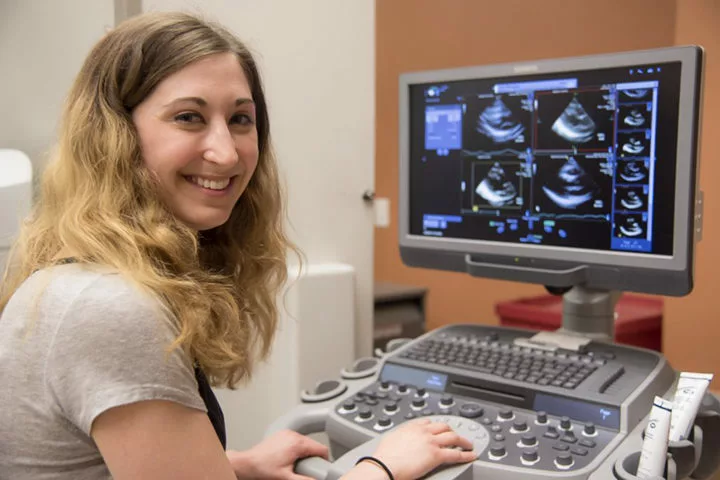
A distinguishing feature of the Department of Medical Physics is its setting within a top-tier research institution. With long-standing, close collaborations with departments across the School of Medicine and Public Health, UW College of Engineering and other UW–Madison units, as well as with industry partners, the Department of Medical Physics is at the forefront of building relationships to advance research, patient care and education.
As the first stand-alone medical physics program in the United States, established in 1981, the Department of Medical Physics also trains the next generation of medical physicists through its graduate, residency and fellowship programs.
Further, notable faculty members have successfully patented and licensed numerous inventions, including:
- Digital subtraction angiography, a type of X-ray fluoroscopy technique used in interventional radiology to visualize blood vessels in a bony or dense soft tissue environment;
- TRICKS high-speed MR angiography, a technique that tracks blood flow;
- Pinnacle radiation treatment planning software, now used worldwide;
- Tomotherapy, a system that delivers precise doses of radiation to tumors while allowing physicians to monitor treatment with a built-in CT scanner;
- Lunar bone mineral densitometry, which is used to detect osteoporosis; and
- Ultrasound tissue-mimicking materials that are used in machine calibration, medical imaging research and surgical simulation, and ultrasound of phantoms that mimic the properties of human tissue.
The department’s faculty members are among the top royalty recipients at the Wisconsin Alumni Research Foundation — UW–Madison’s patenting and licensing organization — which helps advance transformative discoveries to market.
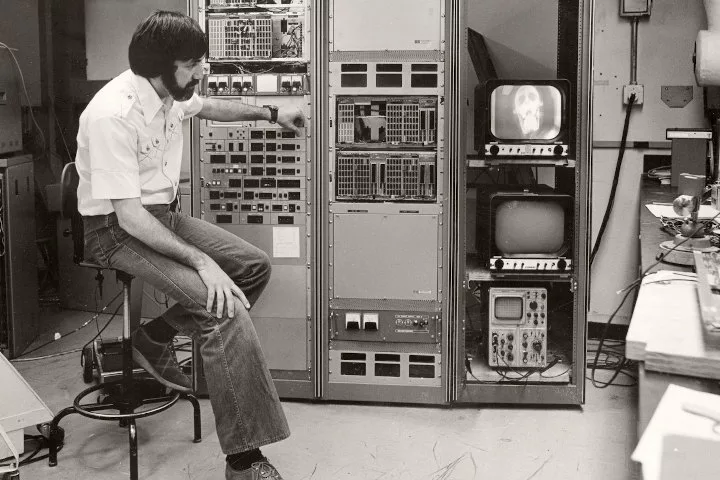
Yet, medical physicists’ important work generally goes unseen by patients. Akin to the wizard from the Wizard of Oz, they use their skills “behind the curtain” to make sure patient care, including personalized medicine, is effective, accurate and efficient.
Virtually all U.S. hospitals now have medical physicists on staff to ensure quality in imaging techniques and to help administer radiation therapy. Calling upon their understanding of molecular biological processes, the School of Medicine and Public Health’s medical physics researchers are key leaders in studying how radiation affects the body; developing new radiation safety procedures; and researching options for the detection, evaluation and treatment of human diseases such as cancer, mental illness, organ failure and neurodegenerative diseases.
Housed primarily in the Wisconsin Institutes for Medical Research, the department is conveniently attached to the Health Sciences Learning Center and Clinical Science Center, which are home to the School of Medicine and Public Health and University Hospital, respectively.
“Together with our clinical colleagues, we advance state-of-the-art patient care by developing, validating and translating to the clinical environment novel imaging systems, minimally invasive techniques, personalized treatments and early treatment assessment. Our board-certified clinical faculty members provide expert medical physics services to clinical facilities in Madison, the state of Wisconsin and beyond,” notes Timothy Hall, PhD ’88, interim chair of the Department of Medical Physics, who joined UW–Madison to do research as an undergraduate and earned his master’s and doctorate there before he returned to campus to join the faculty in 2003.

Hall’s research involves using ultrasound to describe the collagen microstructure of tissues, which provides a sense of how the tissue is organized, and how soft the tissues are (an objective surrogate for manual palpation), along with other properties.
“From information like this, we hope to reduce the need for serial biopsy to track tissue changes with disease progression or treatment,” he says. “There also might be situations where this information is sufficient to avoid biopsy or even be used for disease detection and classification.”
The Department of Medical Physics’ history started in 1958, when John R. Cameron, PhD ’52 — who founded and became the first chair of that department — took on a unique joint appointment between the Department of Physics and Department of Radiology. Cameron soon began attracting physics students to study and perform research in the new area of applied physics. This process accelerated after Cameron obtained a research grant from the Atomic Energy Commission to study thermoluminescent dosimeters and funding from the National Aeronautics and Space Administration for his work measuring bone minerals in vivo.
Cameron always credited the growth and success of the young Department of Medical Physics to John Juhl, MD (PG ’49), former chair of the Department of Radiology, and colleagues in the Department of Physics for their support in allowing him the capacity to engage in this new era of research opportunities. Even today, many of the 30 faculty members in the Department of Medical Physics hold affiliate appointments in one or more clinical departments. These include the Departments of Radiology, Human Oncology, Psychiatry, Pediatrics and Medicine. Several faculty members also have joint appointments in nuclear engineering, electrical engineering and/or biomedical engineering in the UW College of Engineering.
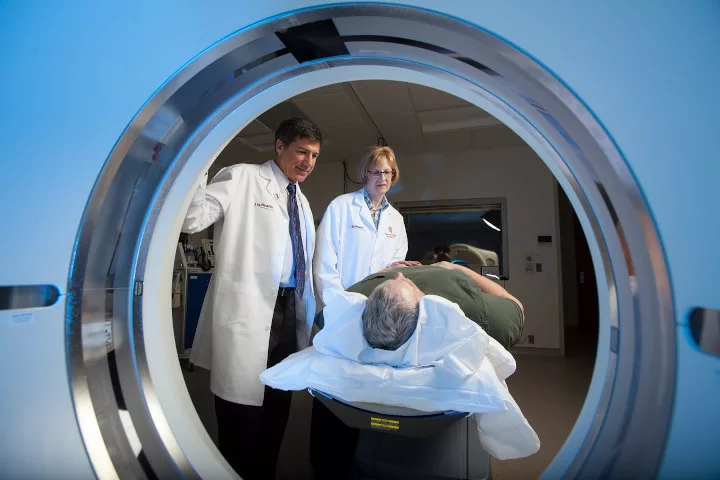
Continuing to grow the Department of Medical Physics, Cameron recruited talented physicists — many from the UW Department of Physics — including Frank Herbert (Herb) Attix, who, with Paul M. DeLuca Jr., PhD, advanced knowledge about the interaction of ionizing radiation with matter, specifically with implications for instrumentation and radiological physics measurements; Charles (Chuck) Kelsey, PhD, who pioneered ultrasound techniques in medicine; Charles (Chuck) Mistretta, PhD, who established quantitative imaging techniques and led the team that invented digital subtraction angiography; Paul Richard (Dick) Moran, PhD, who developed methods to measure blood flow and motion in the human body using MRI; and Robert Jerome (Jerry) Nickles, PhD ’68, who did pioneering work in the area of PET imaging and the use of particle accelerators for radionuclide production for nuclear medicine. It is through these and similar ongoing investigations that research has evolved to answer the call of achieving better patient care. Such collaborations also led to technologies and processes that push forward the benchmark of what medicine can do.
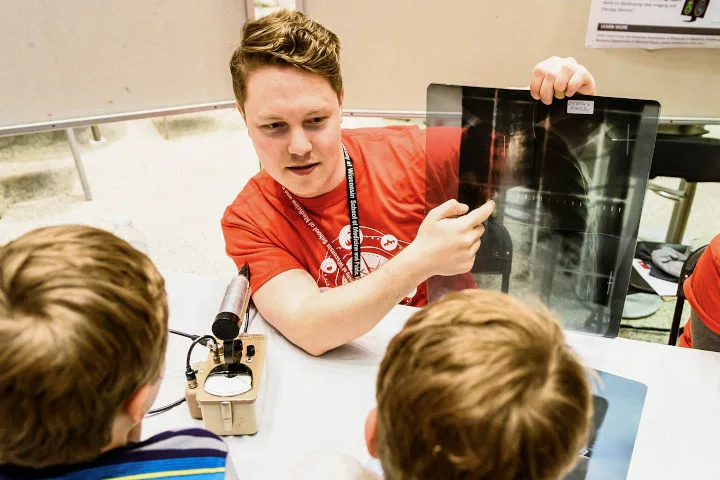
Many start-up companies have roots in the Department of Medical Physics. Examples are:
- Lunar BMD
- Tomotherapy
- Pinnacle Treatment Planning Software
- Standard Imaging
- Radiation Measurements, Incorporated
- Marvel MedTech
- TherVoyant
- AIQ Services
- Medical Physics Publishing
With these successful spin-off companies, a plethora of successful patented contributions to medicine and more than 900 graduate program alumni, the Department of Medical Physics has proven to be a significant contributor to the discovery of new technology, as well as the training of radiologists and the next generation of medical physicists.
Throughout its years of growth and change, the department continues to rank among the top medical physics graduate programs in the nation.
Reflecting on the Department of Medical Physics’ rich history with masterminds “behind the curtain,” Hall concludes, “While I am immensely proud of our department’s achievements past and present, I firmly believe the future is even brighter.”
Brian Pogue Becomes New Chair
As of January 2022, Brian Pogue, PhD, is the new chair of the Department of Medical Physics at the University of Wisconsin School of Medicine and Public Health.
An expert on innovations in medical imaging systems, Pogue has been a professor at Dartmouth College for 25 years. His National Institutes of Health-funded research centers around medical physics and biomedical engineering. This work relates to advanced optical tools that allow for advances in surgical and radiation therapy guidance, photodynamic therapy, molecular imaging and theranostics — the cutting-edge combination of the principles of therapeutics and diagnostics.

“I regard the Department of Medical Physics at the University of Wisconsin School of Medicine and Public Health as one of the crown jewels in medical physics and look forward to continuing its strong traditions,” says Pogue. “We are perfectly poised to strengthen the department even further by focusing on those aspects of medical physics where discoveries and inventions lead to engineering devices and entrepreneurship activity. This pathway advances fundamental research as well as translational tools that change the field of medicine. The education model represents the premier experience for any medical physics graduate student.”
Pogue earned his doctoral degree in medical physics from McMaster University in Canada. He completed a research fellowship at Harvard Medical School and Massachusetts General Hospital before joining the Dartmouth faculty.
Having published more than 400 peer-reviewed journal articles and taught classes in electrical and biomedical engineering, Pogue directed the master and doctoral programs in engineering intermittently from 2004 through 2019, with a four-year term as dean of graduate studies for Dartmouth College.
In 2015, he established Dartmouth’s medical physics doctoral program, which is accredited by the Commission on Accreditation of Medical Physics Education Programs, and he co-founded the college’s Center for Imaging Medicine, where engineers work inside the Dartmouth-Hitchcock Medical Center.
Pogue holds 12 patents with another 12 pending, and he has co-founded and led two companies. One of them, DoseOptics LLC, is advancing the world’s only camera system to image radiation dose in patients receiving radiotherapy. His accolades include being elected as a fellow of the Optical Society of America, the International Society for Optics and Photonics (SPIE), and the American Institute for Medical and Biological Engineering. Additionally, he is the editor-in-chief of the Journal of Biomedical Optics, published by SPIE.
“We are delighted to welcome Dr. Pogue as chair of our storied Department of Medical Physics,” notes School of Medicine and Public Health Dean Robert N. Golden, MD. “His background as a highly productive researcher, deeply respected mentor and teacher, and innovative entrepreneur will contribute to the continued evolution of this world-renowned department.”